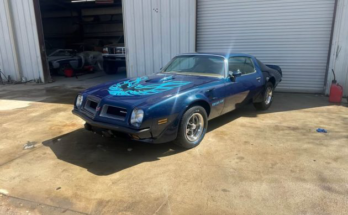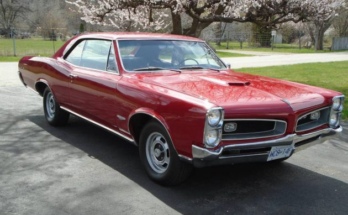 Toyota’s second EV should go further, charge faster, and cost less than its rookie effort.
Toyota’s second EV should go further, charge faster, and cost less than its rookie effort.
If you’re one of the few people who remember the C-HR that Toyota sold in the U.S. from 2018 to 2022, banish the thought of that too-slow and too-small crossover. The 2026 Toyota C-HR+ represents a radical departure from whatever brand identity still lingers after the demise of the gas-powered penalty box. The resurrected and electrified C-HR should be properly quick with room for a family of four and, unlike its predecessor, the all-important option of all-wheel-drive.
The C-HR+ also represents Toyota’s much-needed second shot at a modern EV. By incorporating a few lessons learned with the unlovable bZ4X, it should extend the range and speed up charging times. More important, it has the potential to crack the affordability nut that’s choking the entire American EV market right now. We figure the success or failure of the Toyota CH-R+ depends less on the technical specs and more to do with the big (or small) number on the window sticker. We haven’t heard a peep about pricing, but if the C-HR+ lands in the low $30,000 range, it could vault Toyota from electric-vehicle back marker to a legitimate competitor.
This Is Not Your Kid’s C-HR
Aside from the name, the sloping roofline, the rising beltline over the rear wheel, and the rear door handles hidden in the C-pillars, the C-HR+ shares almost nothing with the version that came before it. Thanks to its handsome styling and (what are sure to be optional) 20-inch wheels, the EV looks far more sophisticated and expensive than its predecessor. It also helps that it’s larger. Built on Toyota’s e-TNGA dedicated EV platform, the CH-R+ it measures 4.4 inches longer than the gas C-HR in both wheelbase and overall length. At 180.0 inches from nose to tail, it’s within two inches of the Toyota RAV4.
Faster, Better, Longer
The CH-R+ is making its debut in Europe, and Toyota hasn’t yet confirmed details for the U.S. market, so some of the numbers and finer points may change before it arrives at American dealers in the first half of 2026. We do know that the CH-R+ shares most of its powertrain components with the updated 2026 Toyota bZ4x. In Europe, Toyota will offer two batteries with 57.7 or 77.0 kWh gross capacity. Front-wheel-drive models make 165 hp when paired with the small battery or 221 horsepower in combination with the larger pack. The hot ticket, of course, is the two-motor, all-wheel-drive version, which Toyota claims will be good for 338 horsepower and a 0-60 time of less than 5.2 seconds. That model will be offered exclusively with the big battery.
Toyota’s not talking about range beyond saying the electric C-HR it will do up to 600 kilometers on the European WLTP cycle. Convert that to miles then lop off about 25 percent due to testing differences and we’re estimating the big-battery, front-wheel-drive range king could earn around 270 miles in the U.S.’s EPA test. We’re told new motors are more efficient than what’s currently used in the bZ4x, but interestingly all-wheel-drive models use two permanent-magnet motors and neither one has an axle disconnect. That strange decision suggests Toyota is still learning the basics of EV Design 101. Using one induction motor or an axle disconnect would boost efficiency and range, especially during long-distance highway drives.
DC fast-charging peaks at 150 kilowatts, which is the bare minimum for an EV to be competitive today. The good news is that Toyota has finally implemented a battery preconditioning algorithm, which should shorten charging times, particularly in cold weather. It can be activated manually or automatically when you select a fast-charging station in the navigation system.
Squeeze In and Stretch Out
The cabin looks like a subtly updated take on the current Toyota bZ4X cockpit. There’s a familiar digital instrument cluster plus a larger, standard 14.0-inch touchscreen running Toyota’s ubiquitous Audio Multimedia infotainment system. That screen doesn’t appear that much larger, though, because it now integrates climate controls that, in prior Toyotas, existed as controls separate from the screen. The vehicle Toyota showed us also had dual wireless phone chargers in the tall, conventional center console that would look at home in a combustion-powered car if it weren’t for the rotary gear selector knob. On first glance, the interior materials look and feel nice enough to make us question our price estimate.
The stretched wheelbase pays off with just enough rear-seat legroom to comfortably accommodate a 6-foot, 3-inch adult, although that’s moot since headroom will be tight for any adult who could reasonably be described as “tall.” The sloping roofline makes for an attractive car at the expense of practicality. While the cargo area is also dimensionally compromised, a 1500-watt household outlet, a JBL subwoofer, and an adjustable-height load floor help elevate the C-HR+ above basic transportation.
It All Comes Down to One Number
Compared to the 2022 C-HR and the current bZ4X, the 2026 Toyota C-HR+ looks like a solid upgrade. But those foils are some of Toyota’s biggest recent misses. The real test for any new car is how it stacks up against its strongest competitors. We’ll have to wait for more details and seat time before casting those judgments. As we said form the start, what matters most is the price tag. A price around $30,000 would motivate a lot of buyers to overlook range or charging speeds that come up a little short.


